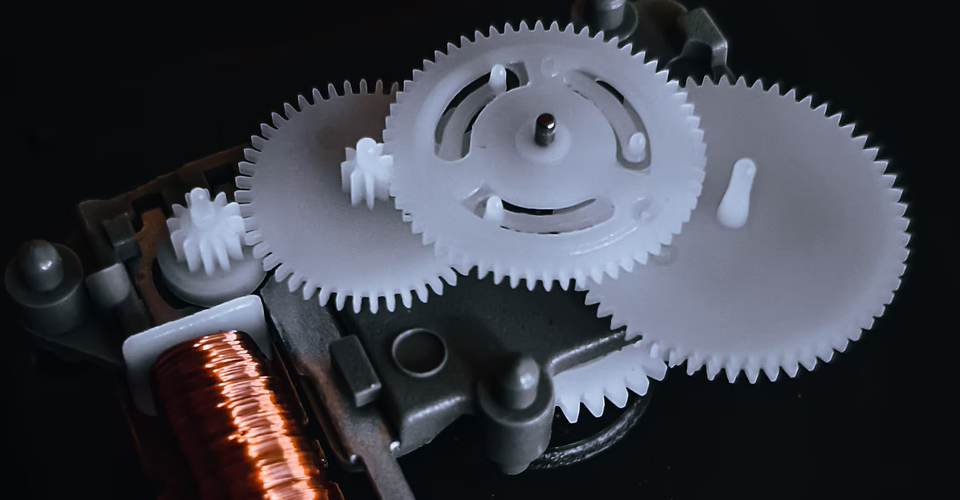3D Printed Gears: What You Need to Know
Think of the last time you have used a can opener. Or the first time you have ridden a bicycle. Have you ever wondered how these things work? It’s all thanks to those toothed spheres you see in them – gears.
Gears are known as one of the greatest inventions of humankind. Since then, people have used them to transmit power from one part of a machine to another to change speed, force, and direction. Today, you can find them in almost every modern appliance you can imagine.
Gears may look simple, but they perform strenuous work for machines to function correctly. Hence, they should be fatigue- and stress-free to avoid malfunctions that lead to disastrous events. Because of this, gear manufacturing is considered a highly specialized field.
In this article, you will know the application of 3D printing technology in making gears you can use for day-to-day appliances.
3D Printed Gears
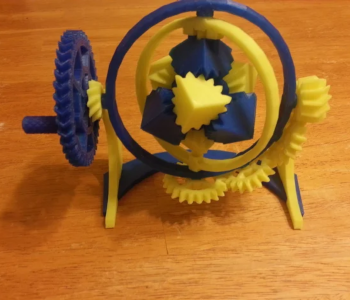
Throughout the years, the processes in gear productions remain unchanged. But with the continuous growth in demand for gears, gear manufacturers are thinking of innovative ways to produce them faster.
3D Printing is an Additive Manufacturing (AM) technique that has revolutionized the world of manufacturing. However, manufacturing gears require special skills, making 3D printing seem sensible to produce them. 3D-printed gears are inherently weaker compared to their metal-cut, traditionally-made counterparts.
So why 3D print gears then? Despite being less durable, they are still very suitable for a wide range of applications. In addition, AM allows easier customization of gears and faster production.
Making 3D Printed Gears
1. Using the Right Design
When designing a single gear, you should consider two basic parameters: its pitch and the number of teeth. The pitch denotes the number of teeth of gear with a one-inch diameter. In a gear assembly, the teeth of the gears must fit perfectly with one another.
Prototyping a gear may be easy, but getting the right design can be challenging. Designing modern gears is a century-old discipline that involves a lot of physics. It is good that gear generator tools and software make the designing process much more manageable.
2. Using the Right Materials
Stiffness and durability are vital properties of gears, and these can be significantly affected by the materials you use. The chemical properties of the material are as important as their mechanical properties. Both of them may affect the printing process and the overall quality of the object.
Aside from metals, thermoplastic filaments are used to 3D print gears. Read the rest of the article to learn more about PLA, ABS, PETG, and Nylon. In the end, you will have a better understanding of these materials to help you determine which would work best for your gears.
3. Keep a Close Eye During Printing
3D printing is fully automated, but it is still imperative to keep a close eye during the printing process since hazards may still occur. For instance, there are reported cases of printers catching fire caused by faulty wiring or heated bed failures. Likewise, the print might detach from the surface in the middle of the process and cause filaments to spray out of control.
On the good side, you can still monitor your printing project from a distance through CCTV cameras and applications that can operate your 3D printer from afar.
What’s the Best Material for 3D Printed Gears?
The materials you use significantly affect the process and final output. Metals are the most common material used in making gears. However, in 3D printing, thermoplastics are the more popular option. Here are four of the most common thermoplastics used in 3D printing gears.
1. PLA
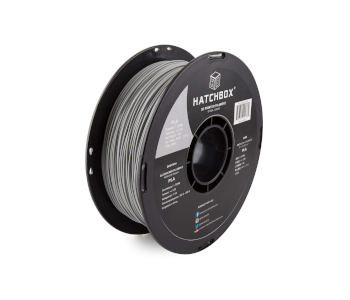
Polylactic Acid (PLA) is the go-to material for 3D printing enthusiasts because it is low-cost and durable. Made from natural renewable resources such as sugarcanes and cornstarch, it is biodegradable. PLA as filaments for 3D printing is also energy-friendly since they consume less electricity. You don’t need to use heating beds during the process, and the required nozzle temperature is only 180 to 230 degrees celsius.
On the other hand, PLAs have low heat resistance and are prone to oozing. Because of this, 3D-printed gears made from such materials should not be exposed to high temperatures to maintain their durability. In addition, since PLAs are biodegradable, the gears are prone to brittle and may eventually break.
2. ABS

Acrylonitrile Butadiene Styrene (ABS) is another commonly used filament by 3D printers because it is low cost and still has good mechanical properties. It is also famous for its toughness and resistance to impact. In addition, they are easily machined and colored compared to other plastic filaments.
However, using ABS to make 3D printed gears increase your electricity consumption since your printer nozzle and heating beds need to be set at 230 to 250 degrees Celsius and up to 100 degrees Celsius, respectively.
ABS is also prone to shrinking and warping, which would result in poor precision and accuracy. This is due to thermal contraction when cool air suddenly hits the newly printed object. Warping can be avoided by creating an enclosed chamber that can help maintain the heat within the printing environment while the thing hardens.
3. PETG

Polyethylene terephthalate glycol, or PETCG, is commonly used because it is more heat-resistant, more flexible, and less brittle compared to PLA. In addition, it has a smooth, glossy finish which makes it aesthetically pleasing to the eyes.
On the other hand, PETG has strong adhesion to heating beds. However, this can be overcome by simply putting down a filament layer in the build plate before starting the printing process. In addition, PETG is almost warp-resistant, making it suitable for manufacturing gigantic gears. But, it is not ideal for smaller ones.
PETGs also tend to ooze and leave strings of plastic on your print. Hence, you will need to pay more attention to post-processing to remove the blemishes from the printing process.
4. Nylon
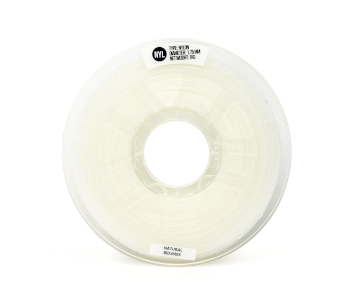
Nylons are durable, resilient anf fleixible. Hence, this synthetic polymer is preferred by many professional 3D printers. In addition, you can easily blend them with other plastics to form composites and improve their performance parameters.
In terms of aesthetics, Nylon looks and feels like silk. Thus, 3D printed products made from Nylon are smooth and slick to the touch. They also have a low friction coefficient, high inter-layer adhesion, and high melting temperature (at 230 to 250 degrees Celsius), making them the best choice for 3D printed gears.
On the other hand, nylon filaments are hygroscopic. They tend to absorb air moisture, leading to swelling during the printing process. Conduct 3D printing in a well-ventilated area to avoid this.
How To Print Stronger Gears
Generally speaking, traditionally made gears are more robust than 3D printed ones. There are many ways to make the 3D printed versions as durable as traditional ones. Here are a few of them:
1. Filament Temperature
Most filaments used to make 3D printed gears are thermoplastic. However, you must remember that each has its unique properties, including temperature requirements. When 3D printing, it is crucial to know the filaments’ temperature requirements to get the best outcome.
You may use heating beds to allow printed plastics to cool slower and add adhesion to the object. Doing so will avoid warping and let the layers stick well. Because of this, you should turn off cooling fans when 3D printing with thermoplastic filaments.
2. Infill Overlap
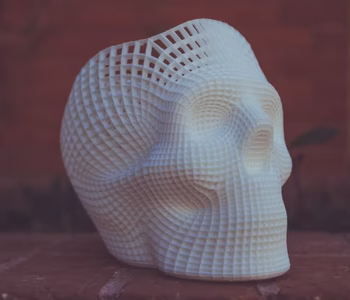
Unlike traditional manufacturing, AM gives us control over the infill of objects. 3D printers have this unique feature called “Infill Overlap,” wherein you can adjust the settings on how much infill you want your project to have.
Manufacturers often overlook infill overlap even though it plays a vital role in the strength of objects made. When 3D printing gears, overlapping the infill is necessary since it adds strength between the infill and perimeter.
Generally speaking, the higher the percentage of infill overlap, the sturdier your gear – or any other 3D- printed object – becomes. A 100% infill will produce the most robust piece but would cost a lot since it would require more raw materials. An infill overlap of 15% to 50% is vital to produce a sturdy enough object without using too much raw material in the process.
3. Reduce Cooling
Some manufacturers use cooling to improve the surface quality of 3D-printed objects. However, this process can cause poor strengths if done ineffectively. Subjecting 3D-printed objects to sudden temperature change would lead to an increase in amorphous structures that could affect the integrity of your gears.
In addition, rapid cooling will harden the printed object faster. This may cause the layers of the things to separate easily since the materials have lesser time to bond together.
Each plastic filament can withstand different levels of temperatures. So far, PLA is the only one that works best with strong cooling fans. Hence, if you are using other plastic material, you might want to reduce the cooling fan rate to allow the parts to bond strongly during the printing process.
4. Layer Height
In 3D printing, you call the resolution or detail of the object Layer Height. A lower layer height equates to a more complex 3D printed object.
A lower layer height is also preferred since the layers will have better adhesion, which increases strength and durability. In addition, there will be fewer open spaces that may form weak spots in your object. A 0.1mm to 0.15mm layer yields the most robust result in a study conducted.
Lubricating 3D Printed Gears
![]()
3D-printed gears look basic and straightforward. However, they can be one of the heaviest loaded components of a machine. Although specifically designed to be simple, it is essential to ensure that they are properly lubricated to reduce wear and function efficiently.
Lubrication of 3D-printed gears should be done regularly since plastic materials are more prone to wear if not appropriately maintained. However, lubricating is not just picking up the nearest grease available and smearing it on your gears. Different plastics have different reactions to other lubricants.
For instance, Nylon and ABS are derived from petrochemicals and are ok with practically any oil-based lube. On the other hand, PLA is derived from natural products and would react best to less viscous vegetable oils.
Wrap Up
You can say that 3D printing gears are possible with all these facts. Here’s to wrap up the things discussed in this article:
1. Gears may look simple, but they are vital components of how and why most things around us work. Since they are the most “heavily loaded” parts of machines, making solid and durable gears is crucial. You can produce 3D-printed gears that have similar strength to the traditionally-made ones by considering the several factors that could affect the strength and overall quality of the product.
2. Temperature plays a vital role in the printing and cooling process. Remember that getting the right temperature is always crucial since it can be the difference between a failed or successful print.
3. Choosing the suitable material is vital since there are several thermoplastic filaments for 3D printing. PLA-printed gears are low-cost and durable. But since they are not heat resistant and prone to brittle, they are best used for short-term projects and prototyping.
ABS filaments may have good impact and wear resistance but are prone to warping. Since gears should be precise and accurate to function correctly, ABS becomes the least recommended material for 3D printing gears.
Nylon is most recommended for 3D printing gears because of its mechanical and chemical properties. Not only are they durable and flexible, but they can also withstand different levels of temperature compared to other thermoplastic filaments.
4. Lubricating gears are essential, especially for 3D printed ones, because it reduces friction and minimizes wear. Remember to choose a lube that is suitable for the material of the gear.
5. The right design is always essential since it affects the effectiveness of the gear. Designing and creating gears is considered a highly specialized field. Thanks to modern technology, you can produce gears using gear-making software and 3D printers.

